Once I had time to go through all the whooping crane trip photos from early January, I decided to offer a few more images here. I hope you don’t mind. I’ll be out looking for birds and landscapes next week, so the subjects will be a little different. Let me know what you think about these. If you like the idea of trying these birds, we will be running the tour in mid-December in 2013. That should produce a little better weather and all the whoopers will be here by then. Let me know if you want to join that trip and I’ll get you on the list.
Just click on any photo in the upper right corner area to make it open in a larger, sharper format. Then you can advance or go in reverse for more photos.
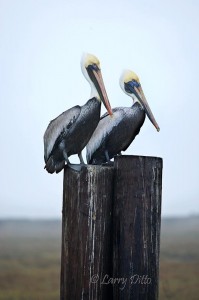
Even with some rain coming down, several of us got this nice pose of brown pelicans on pilings. By using a layer mask technique, I was able to brighten the birds and darken the gray sky a bit to help the birds “pop” a little more. I keep a camera with the 100-400 mm lens on a sling around my shoulder for shots like this. We approached the birds quickly but I was able to rip off quite a few shots as we passed them because the second camera was handy at arm’s length.
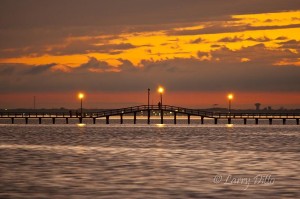
By panning from a speeding boat, I was able to keep the focus point stable and get an acceptable shot of the Goose Island Park pier (above) well after sunset… 1/30 second, ISO 1600 with some noise reduction in Adobe Camera RAW.
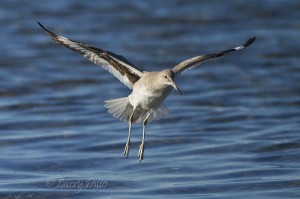
After a morning of crane photography, we worked our way back to the docks by drifting up to several oyster bars. As usual, there was a the wide variety of birds watching the boat traffic. As the shots above and below attest, we were able to get flight shots of willets and American oyster catchers. I try to keep the shutter speed close to 1/2000 second when shots of flying birds are likely. That is a good speed for stopping wing motion.
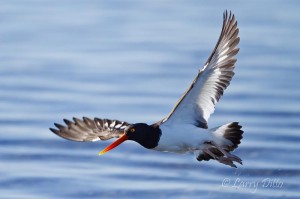
The oyster catcher was photographed with a Canon 7D and 500 mm IS lens, hand-held. With this type of shooting, it isn’t always possible to get the light and wind at optimum angles, but some really nice shots can result if things fall into place.
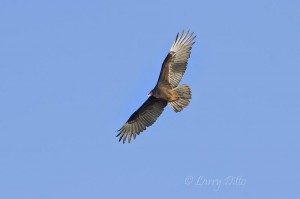
Whooping cranes were our the prime photo target, but most of us remained ready to capture a few images of just about anything within range. This vulture glided past us several times.
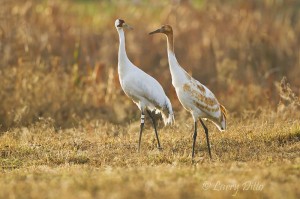
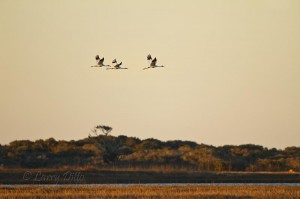

As we watched their backsides from the south, this group of whoopers and sandhill cranes landed into the north wind, offering a shot that was far from ideal but, nevertheless, interesting.
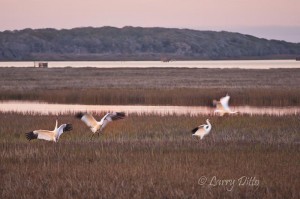
Shame on me for not being prepared for these whoopers (above) as they landed after sunset. My ISO was still set at 400. At ISO 1000, this could have been a very nice capture. Note the stand of old live oak in the background.
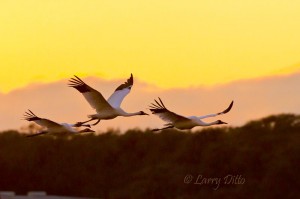
Several of you liked a similar shot in the last newsletter, so I decided to share another frame from that fly-by. During this photo tour, we had a couple of evenings when the sky was incredible. With 6 photographers keeping their fingers crossed as the sky turned to orange and gold, something good had to happen. Patience paid off and everybody got a good burst of shots at these guys.
Thanks for dropping by to take a look.
Larry
